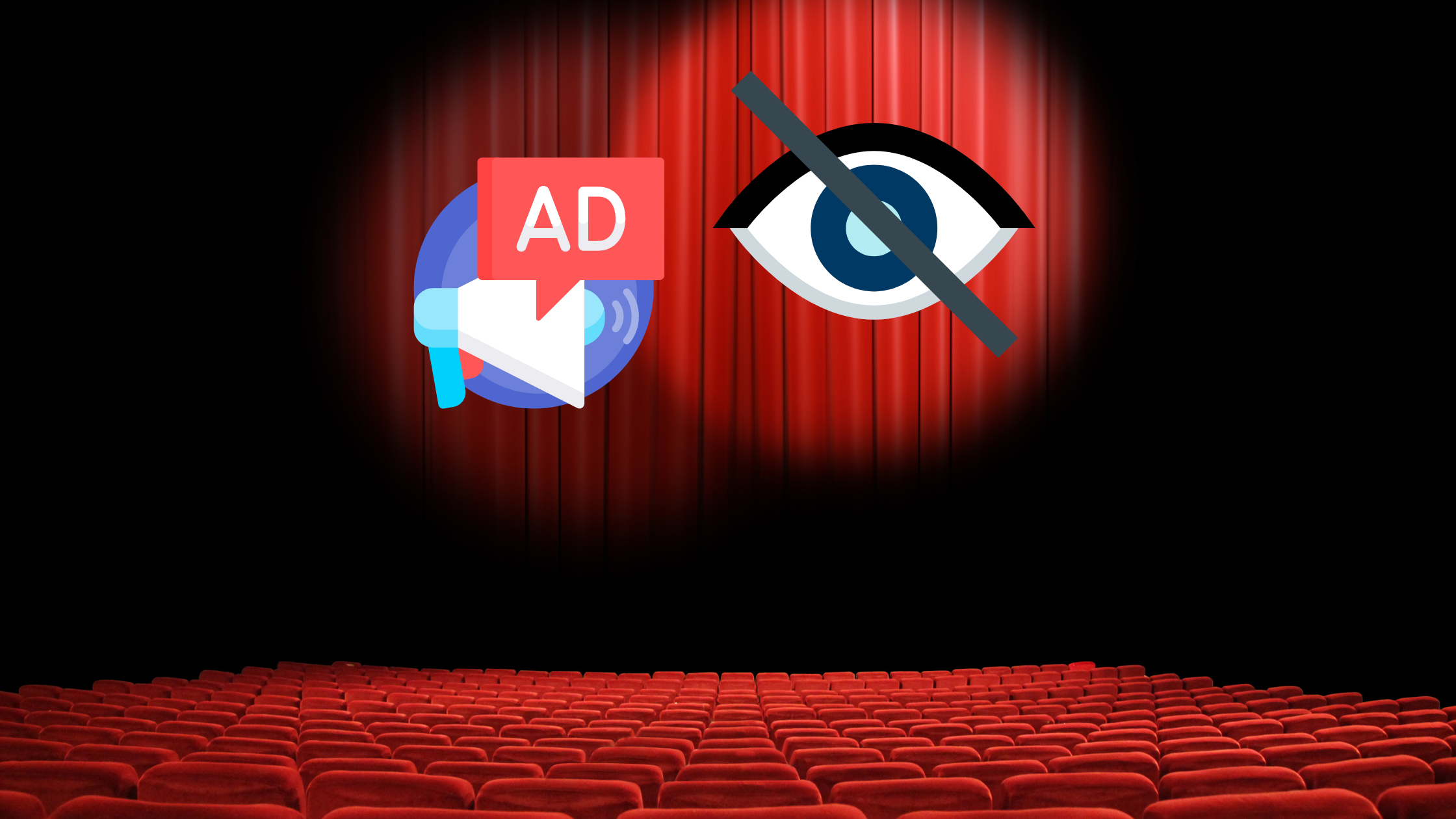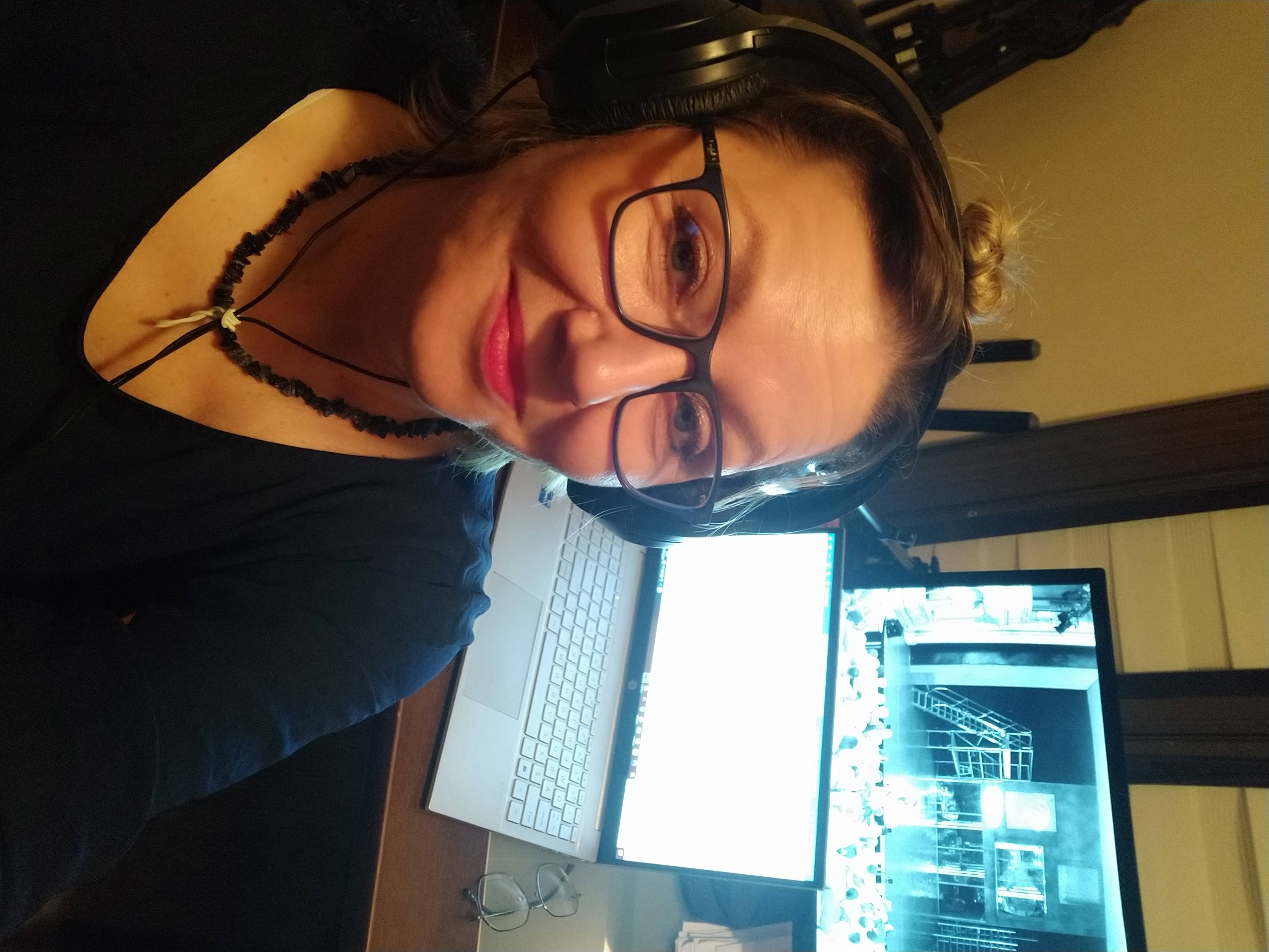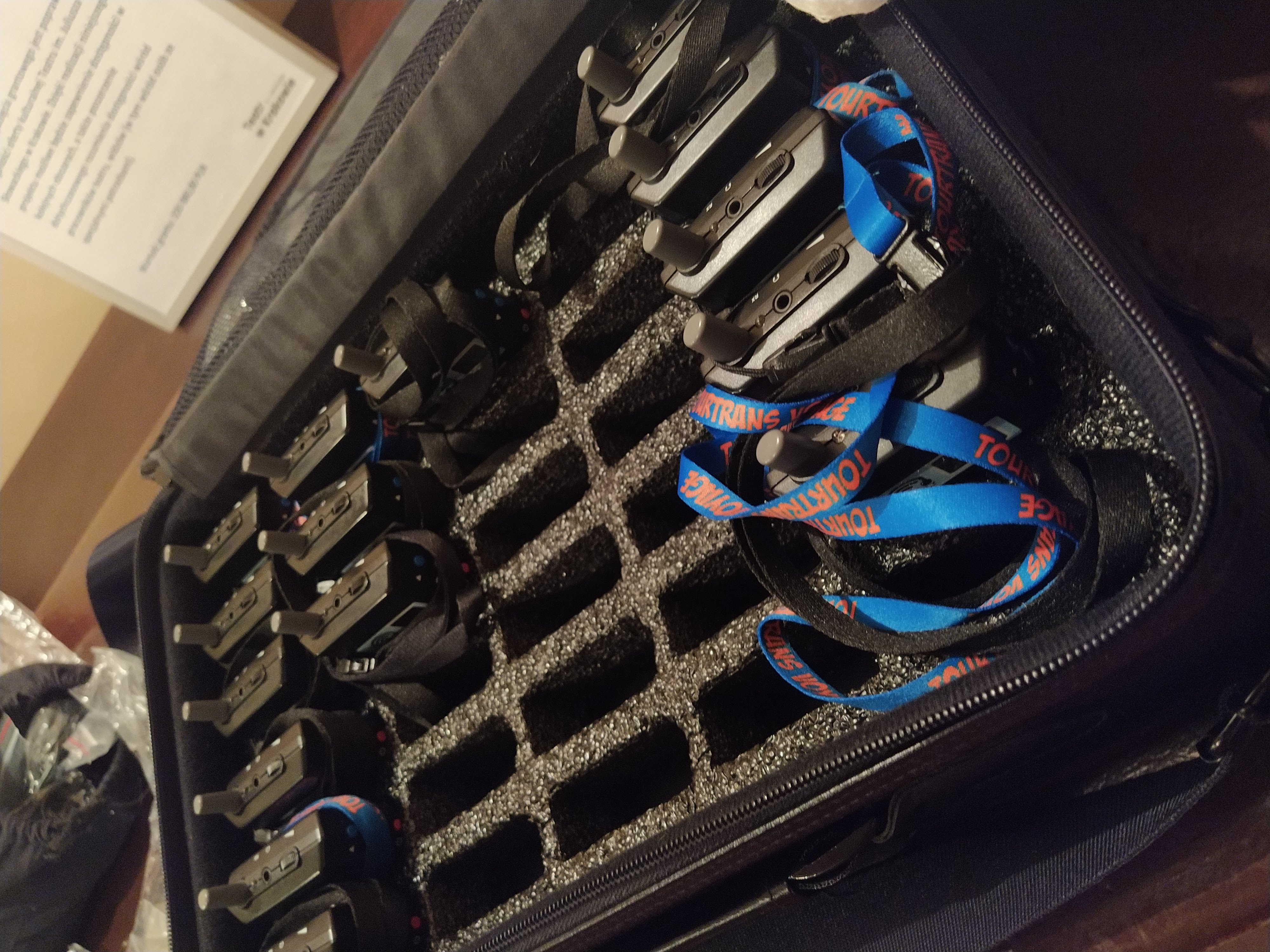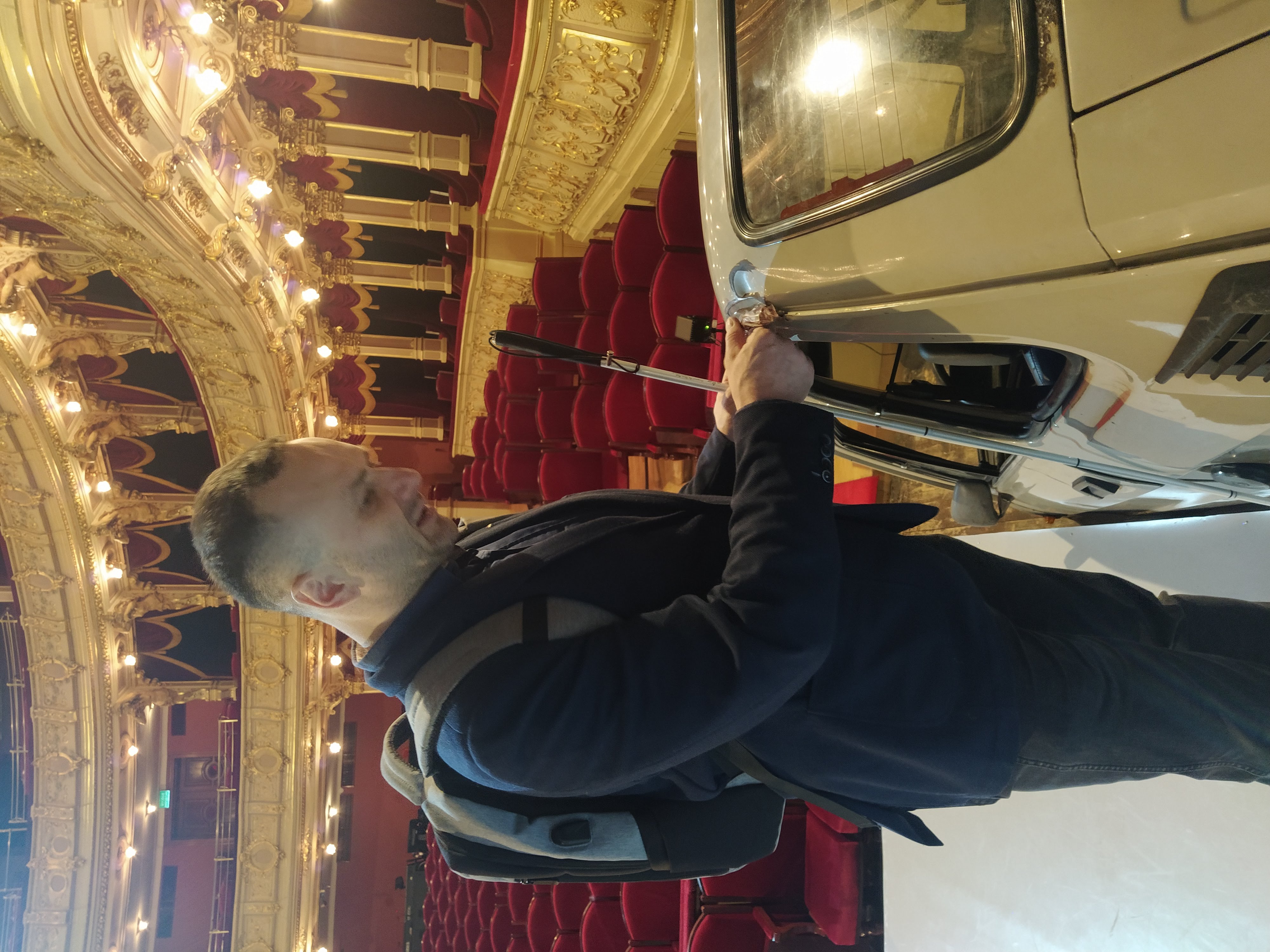How to organize a theather performance accessible to people with visual impairments?

Do you coordinate accessibility at a theater? Are you a theater manager? Wondering how to start creating an accessible offering for people with visual impairments? This article is just for you.
Do visually impaired people enjoy going to the theater?
Visually impaired people are very eager to come to the theater. This place provides many sensations flowing through several senses. Music, sound effects, voices of actors and actresses. The space of the hall, the specific smell. Contact with other spectators, socializing around the performance, discussions. All this has a very intense effect. However, it is impossible to immerse oneself satisfactorily in most performances without knowing the visual layer. This is why audio description is so important in the theater. Thanks to it, a visually impaired person can follow the action on an equal footing with other viewers.
Introducing an accessible performance is a process that involves a group of people. Some tasks can be entrusted to external specialists. Some are carried out by theater employees.
Text of theatrical audio description
Of course, the essential and initial task is the development of the audio description text. This task is worth entrusting to a competent team, namely an audiodescriber and a consultant with visual disabilities. We have described the process of developing, among other things, a theatrical audio description in the article titled. "What is an audio description and how is it created?".
It remains on the side of the theater to provide a video recording of the performance. The better the quality of it, the more smoothly the description work goes. Recordings from several cameras work great. This allows you to analyze the action, seeing both the entire scene and individual characters. It is also important to have good audibility of the acting ensemble and the sound layer. Photographs are also useful material. On them you can look closely at all the details of costumes and characterization. Another important file that the theater provides is the current version of the script. It is in this file that the individual parts of the audio description are typed in, between the issues of actors and actresses and between the important sounds. The audio description is typed in a different color so that it is well distinguished from the dialogues when read.
The audio describer and consultant analyze each part of the performance, looking for places that require description and pauses to allow the introduction of additional information. This is because the audio descriptions must not overlap with the actors' statements.
Mostly, it is impossible to describe during the performance all its important elements - the appearance of the scenery, the general visual concept of the staging, the appearance of the characters. Therefore, a solution has been developed that allows a visually impaired viewer to get acquainted with this information before the performance. This is the so-called audio introduction. It is a text read out before the performance begins. It can also be put on the website so that viewers can read it at any time for themselves, before going to the theater.
Theatrical audio description reading
The next step is to prepare the reading of the audio description during the performance. What is needed in this case is to provide conditions for it to be heard only by those who need it. For this purpose, a system consisting of a transmitter and receivers for infrared or radio is used. The speaker reading the audio description is located in a room isolated from the audience. In it he must have a monitor with video transmission from the stage and headphones for listening, and above all a microphone with a transmitter. The room must also have a table for a laptop and a non-squeaky chair. Arranging such a place is up to the theater. It requires the involvement of a multimedia specialist and a sound engineer. For the audience, on the other hand, a stand should be arranged near the checkroom, where a theater employee will lend receivers and then accept them after the performance.
Systems consisting of a transmitter and receivers are mobile. These are the same devices that are used for simultaneous interpretation or guided city tours. Our team works with a company that rents this type of equipment. Some theaters buy such sets to own them.


Can you touch the theater?
An important source of information for visually impaired people is the sense of touch. Therefore, the theater uses the so-called touch tour of the stage. At times designated by the theater, interested persons are invited before the performance. Under the guidance of a theater employee, they tour the stage, learn about the scenery, selected props or costumes. Such meetings extremely deepen the theatrical experience of blind and visually impaired people. Our company can provide training for the accessibility coordinator, people from the education department and other employees on how to organize such events.

Inviting recipients with visual impairments
A very important step in preparing for an accessible performance is to invite viewers with visual disabilities. Concrete measures are needed to ensure that information about the offer with audio description reaches the audience. Of course, the basic thing is to put it on the website, in the repertoire tab. Therefore, it is extremely advisable to make sure that the website is accessible to users using screen readers. If you are unsure whether the website is accessible - it is worth ordering a digital accessibility audit.
However, just putting information on the website is not enough. Since the topic of theater accessibility is still in its development, many people with visual disabilities do not look for such information on theater websites. Therefore, it is worth reaching out to those interested by contacting non-governmental organizations involved in activities for this social group. This is a task for the accessibility coordinator.
The coordinator should provide audio description recipients with support in terms of booking tickets. At the same time, it is worth remembering that people with visual disabilities need seats in the hall with good visibility. This is because this type of disability is a whole spectrum of specific functioning in terms of visual stimuli. It rarely means a state of absolute absence of them. Often individuals have what is called residual vision. This few percent range of perception of visual content is very important.
Audience and box office staff will surely appreciate training in handling people with disabilities. Workshops where you can talk to trainers with visual impairments works best. They will simply and practically explain the rules of contact. They will show you how to play the role of an assistant, i.e. how to be a guide and provide support in using the checkroom, getting to your seat in the auditorium or during stationary ticket purchase. They will explain what language phrases to avoid so as not to unintentionally create a discriminatory situation. A good trainer combines a sense of humor and distance with a great deal of experience, so that the fear of a previously unfamiliar social group quickly disappears.
The sum of these activities leads to interesting meetings. It allows the theater to fulfill its mission, which is undoubtedly to enable contact with art for the largest possible group of people on an equal level. It allows it to break stereotypes, including the belief that people with disabilities function in social isolation. Creating the right conditions and inviting them to the theater will quickly show that it is beneficial to expand the audience also to include their friends, family, acquaintances. This is because it is often the case that they are a kind of opinion leaders in their social circle, which provides new opportunities to meet around the theatrical art.

Regina Mynarska
Audio description specialist
Her portfolio includes audio descriptions of several hundred objects, plays and films for major cultural institutions. Conducts training and academic courses on inclusive language, rules of contact with people with disabilities and audio description. Minister of Culture and National Heritage scholarship holder.
Plan an inclusive event with us
We regularly create audio descriptions for theaters, films, help organize accessible performances and events, and provide training courses on how to serve people with disabilities.
